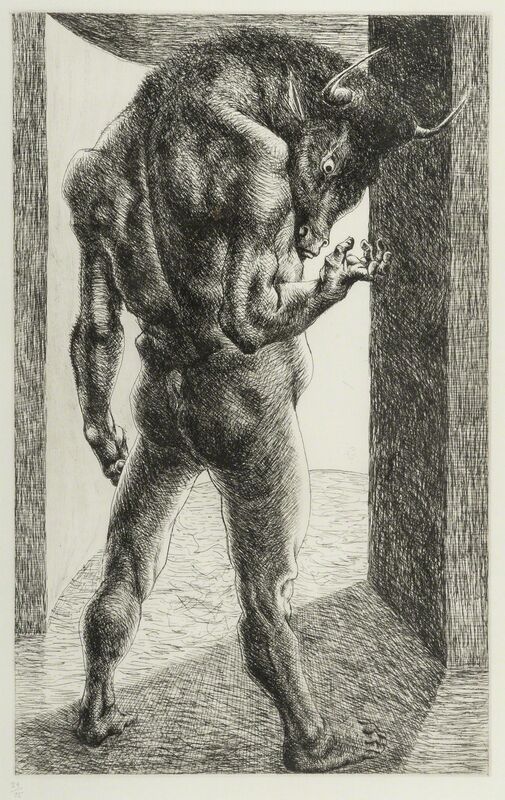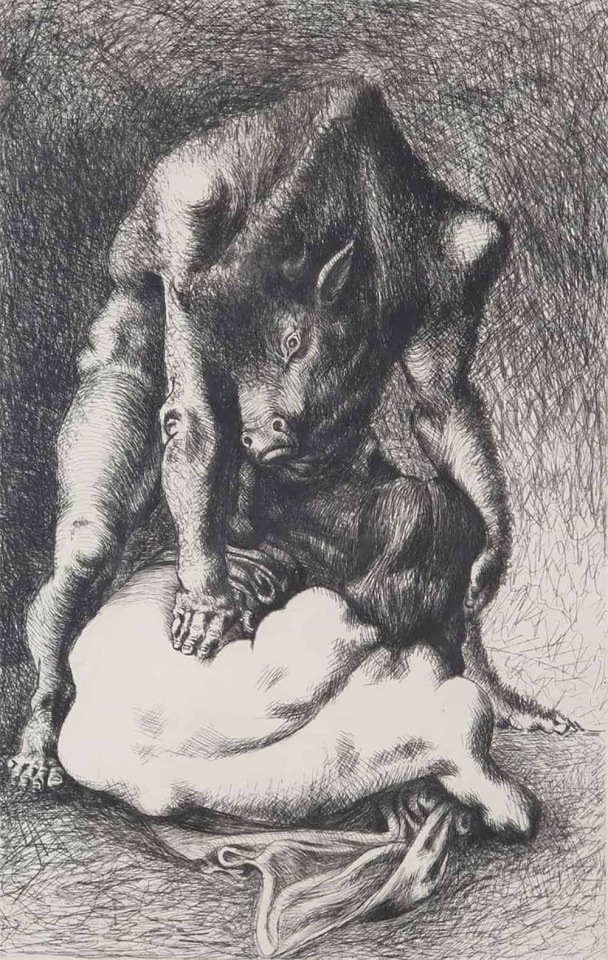#michael ayrton
Explore tagged Tumblr posts
Text

Michael Ayrton (British, 1921-1975), Elysian Self-portrait (Midday), 1949. Oil on panel, 10 x 14 in.
305 notes
·
View notes
Text

Ray Bradbury - Dark Carnival. London: Hamish Hamilton, 1948. First British edition. Octavo.
Art by Michael Ayrton.
152 notes
·
View notes
Photo

Michael Ayrton (British,1921-1975)
Study on the theme of Temptation of St Anthony, 1943
ink, pastel, watercolour and gouache
448 notes
·
View notes
Text

Michael Ayrton Roman Window 1950
38 notes
·
View notes
Photo

(via Michael Ayrton (1921 – 1975) - all things amazing —)
Michael Ayrton
20 notes
·
View notes
Photo










Three Plays by Euripides
In the ancient city of Athens, every two years a festival called the Dionysia would be held in honor of the god Dionysus. Established by the tyrant Pisistratus in the mid-6th century BCE, the event saw processions, feasting, and plays in both comedy and tragedy and it is here that the the young Euripides got his start as a tragedian. Starting with the 455BCE Dionysia and continuing until 408BCE, Euripides competed in a plethora of drama competitions and wrote many tragedies, most of which did not survive to the modern day. Of the ones that did survive, three tend to stand out as the pinnacle of the tragedian’s work; Medea, Hippolytus, and The Bacchae.
Special Collections holds various editions of these plays, with some books presenting them separately and others having them compiled together. The book I worked from is of the latter category, being translated by the English classical scholar Philip Vellacott, illustrated by British artist and designer Michael Ayrton, and published by The Limited Editions Club in 1967. The edition was printed in London at the Curwen Press in a limited edition of 1500 signed by the artist, designed by printer and type designer Will Carter and with Ayrton’s drawings reproduced in Moonachie, New Jersey by the Photogravure and Color Company.
Despite the reputation Ancient Greek tragedies have received for their gruesomeness and brutality, death itself is absent from the stage. Though we may see a character going to their death or their bodies after the fact, there are no surviving Ancient Greek plays that show the moment of death. Euripides tended to employ two different techniques when conveying death; the first is having another character tell the audience or another character how the death occurred, and the other is having the actors shouting what is happening offstage for the audience to hear. The former of these two were greatly favored in the three great plays of Euripides for good reason; it allowed the emotion of the characters to shine through. The three different messengers speak of fear, pain, and grief in a way that no action could depict. It's possible to say that the absence of death in the plays of Euripides made death all the more real.


View more of my Classics posts.
View more Limited Edition Club posts.
– LauraJean, Special Collections Undergraduate Classics Intern
#Classics#Greek tragedy#Greek history#Euripides#Medea#Hippolytus#The Bacchae#Limited Editions Club#LEC#Michael Ayrton#drawings#Philip Vellacott#Curwen Press#Will Carter#Photogravure and Color Company#fine press books
27 notes
·
View notes
Text

Daily Painting
Michael Ayrton JOHN GIELGUD AS MACBETH (1942)
7 notes
·
View notes
Text










Minotaur Suite, Michael Ayrton (1921-1975)
Minotaur as Embryo, 1971
Minotaur Consecrated, 1971
Minotaur as Calf, 1971
Minotaur as Yearling, 1971
Minotaur Rising, 1971
Minotaur Risen, 1971
Minotaur Full-Grown, 1971
Minotaur Pent, 1971
Minotaur Revealed, 1971
Minotaur Alone, 1971
#the burnt city#burnt city#punchdrunk#punchdrunk theatre#immersive theatre#immersive#minotaur#[REDACTED]#i enjoyed the labyrinth exhibition#ashmolean museum#but it definitely needed way more cow guy#michael ayrton#minotaur suite#what is UP with the way this dude draws women tho#not actually show related
9 notes
·
View notes
Text

Michael Ayrton (British, b. 1921)
Minotaur Revealed, 1971
Etching on paper
9 notes
·
View notes
Text

0 notes
Text
Michael Ayrton




some Michael Ayrton minotaurs
1K notes
·
View notes
Text

Michael Ayrton (British, 1921-1975), Encounter No. 1, 1947. Oil on board, 20.5 x 14.5 cm. Jerwood Collection
112 notes
·
View notes
Text
i posted the gif with the ayrton and mika part but so much happens in this video is unbelievable
#ayrton senna#mika häkkinen#mika hakkinen#michael schumacher#jj lehto#rubens barrichello#f1#formula 1#formula one#classic f1
2K notes
·
View notes
Photo

Michael Ayrton (British,1921-1975)
Gethsemane
oil on board
482 notes
·
View notes
Photo
Michael Ayrton The Fortune Teller 1941

Michael Ayrton (Brirish, 1921–1975). The Fortune Teller.
99 notes
·
View notes
Text
not to senna/schumacher post on main but do you ever think about this picture

[ nicola larini and schumacher being told that senna was in critical condition ]
or this clip of michael being asked if equalling senna meant much to him
do you ever think about the fact that michael was in denial when confronted with senna's death and only admitted to accepting it two weeks after the fact. do you ever think he would have felt guilt realising he watched senna sustain his injuries a few corners ahead during a seemingly "innocuous crash" whilst chasing him. do you ever think, retrospectively, that he felt like he shouldn't have won at imola. do you ever think about the fact that even in death senna continued to dominate headlines, eclipsing schumacher's win. do you ever think about the fact that schumacher and senna would occasionally meet after races to discuss where they had gone wrong/where they had lost speed. do you ever think about schumacher realising that would never happen again. do you ever think about the love that was there.
because i do.
#they haven't left me alone for the last week i keep thinking about them#this rarepair has consumed my every waking moment#schumacher telling journalists he'd never dethrone senna ... and then. going on to do just that#i need to take a walk they make me ill#ayrton senna#as12#michael schumacher#ms7#sennaschumi#formula 1#f1#formula one#classic f1
354 notes
·
View notes